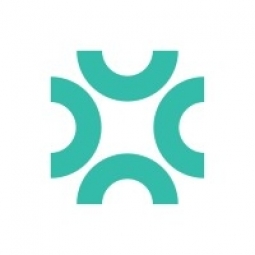Customer Company Size
SME
Region
- America
Country
- United States
Product
- Sage QuickBooks Enterprise
- Centage Corporation’s budgeting, forecasting and reporting tools
Tech Stack
- Excel
Implementation Scale
- Enterprise-wide Deployment
Impact Metrics
- Cost Savings
- Productivity Improvements
Technology Category
- Functional Applications - Enterprise Resource Planning Systems (ERP)
Applicable Industries
- Healthcare & Hospitals
Services
- System Integration
About The Customer
SerenaGroup is a global healthcare management company that develops Centers of Excellence in wound care and hyperbaric medicine. Founded in 2002, the company has locations across the United States and works with hospitals, nursing facilities, and state-of-the-art wound treatment centers. SerenaGroup also conducts clinical trials ranging from bioengineered skin to growth factors to platelet gels. The company's financial structure separates their locations into 25 to 30 separate cost centers. Each of these cost centers required a full profit and loss statement every reporting period, which was a time-consuming and error-prone process.
The Challenge
SerenaGroup, a global healthcare management company, was facing challenges with its financial structure. The company operates across multiple locations, each of which is considered a separate cost center. This structure required the creation of a full profit and loss statement for each individual site every reporting period. The company's existing solution, QuickBooks Enterprise, was capable of producing the individual P&Ls, but it did not support the consolidation of these into a summarized report. The workaround involved a time-consuming process of exporting and merging spreadsheets in Excel, which took 2-3 days every month. This process was prone to errors and did not allow for precise forecasting. Additionally, SerenaGroup needed to allocate overhead expenses to individual facilities, which added another layer of complexity to the process.
The Solution
SerenaGroup decided to supplement its existing QuickBooks Enterprise system with Centage Corporation’s robust budgeting, forecasting, and reporting tools. This solution allowed the company to handle actuals in QuickBooks and use the Centage tools for more sophisticated financial tasks. With this implementation, the company was able to produce individual P&Ls and a consolidated version monthly with just a few clicks. The solution also allowed SerenaGroup to complete the double layer of allocations they needed by creating a custom-built, automated process. This process performed the overhead allocation after the personnel allocation was complete, thus producing the cost center distribution results that SerenaGroup was looking for. Additionally, they created a new data group for personnel expenses to give SerenaGroup an unprecedented look at payroll expenditure detail at the FTE and location level.
Operational Impact
Quantitative Benefit

Case Study missing?
Start adding your own!
Register with your work email and create a new case study profile for your business.
Related Case Studies.

Case Study
Hospital Inventory Management
The hospital supply chain team is responsible for ensuring that the right medical supplies are readily available to clinicians when and where needed, and to do so in the most efficient manner possible. However, many of the systems and processes in use at the cancer center for supply chain management were not best suited to support these goals. Barcoding technology, a commonly used method for inventory management of medical supplies, is labor intensive, time consuming, does not provide real-time visibility into inventory levels and can be prone to error. Consequently, the lack of accurate and real-time visibility into inventory levels across multiple supply rooms in multiple hospital facilities creates additional inefficiency in the system causing over-ordering, hoarding, and wasted supplies. Other sources of waste and cost were also identified as candidates for improvement. Existing systems and processes did not provide adequate security for high-cost inventory within the hospital, which was another driver of cost. A lack of visibility into expiration dates for supplies resulted in supplies being wasted due to past expiry dates. Storage of supplies was also a key consideration given the location of the cancer center’s facilities in a dense urban setting, where space is always at a premium. In order to address the challenges outlined above, the hospital sought a solution that would provide real-time inventory information with high levels of accuracy, reduce the level of manual effort required and enable data driven decision making to ensure that the right supplies were readily available to clinicians in the right location at the right time.

Case Study
Gas Pipeline Monitoring System for Hospitals
This system integrator focuses on providing centralized gas pipeline monitoring systems for hospitals. The service they provide makes it possible for hospitals to reduce both maintenance and labor costs. Since hospitals may not have an existing network suitable for this type of system, GPRS communication provides an easy and ready-to-use solution for remote, distributed monitoring systems System Requirements - GPRS communication - Seamless connection with SCADA software - Simple, front-end control capability - Expandable I/O channels - Combine AI, DI, and DO channels

Case Study
Driving Digital Transformations for Vitro Diagnostic Medical Devices
Diagnostic devices play a vital role in helping to improve healthcare delivery. In fact, an estimated 60 percent of the world’s medical decisions are made with support from in vitrodiagnostics (IVD) solutions, such as those provided by Roche Diagnostics, an industry leader. As the demand for medical diagnostic services grows rapidly in hospitals and clinics across China, so does the market for IVD solutions. In addition, the typically high cost of these diagnostic devices means that comprehensive post-sales services are needed. Wanteed to improve three portions of thr IVD:1. Remotely monitor and manage IVD devices as fixed assets.2. Optimizing device availability with predictive maintenance.3. Recommending the best IVD solution for a customer’s needs.

Case Study
HaemoCloud Global Blood Management System
1) Deliver a connected digital product system to protect and increase the differentiated value of Haemonetics blood and plasma solutions. 2) Improve patient outcomes by increasing the efficiency of blood supply flows. 3) Navigate and satisfy a complex web of global regulatory compliance requirements. 4) Reduce costly and labor-intensive maintenance procedures.

Case Study
Cloud-based healthcare solution for Royal Philips
Royal Philips wanted to launch its cloud-based healthcare solution HealthSuite Digital Platform in China to deliver services to help cope with challenges related to urbanization and population growth. Philips wanted to achieve this goal by combining mobile, cloud computing and big data technologies. To bring this platform and product to market, Philips required cloud computing and local technical service capabilities in China, in addition to a flexible IT infrastructure that could handle user requests.








